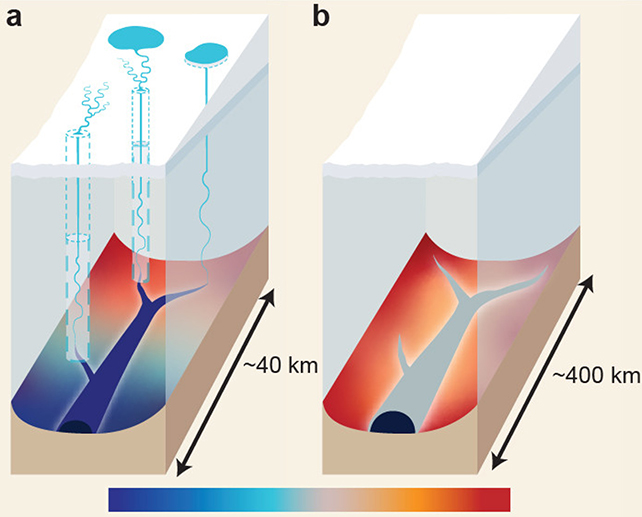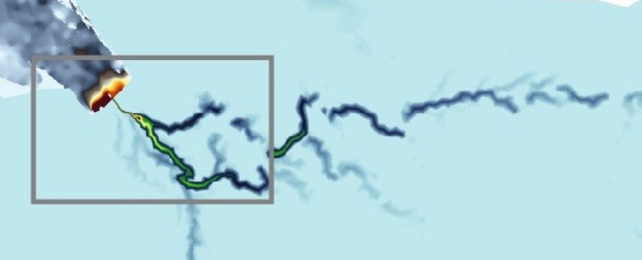Scientists have to factor in all kinds of variables when it comes to predicting ice loss in Antarctica as the world warms up.
Now researchers need to take into account a huge river that runs for some 460 kilometers (286 miles) deep beneath the ice; a distance longer than the river Thames that runs through London in the UK.
Experts say the newly discovered waterway and its offshoots have the potential to substantially affect the way that the glacial ice above it flows and melts.
The researchers behind the discovery used a combination of airborne radar surveys that can peer through the ice, plus water flow modeling. The large area under examination includes ice from both the east and west ice sheets in the Antarctic, with water running off into the Weddell Sea.
"The region where this study is based holds enough ice to raise the sea level globally by 4.3 meters [14 feet]," says glaciologist Martin Siegert from Imperial College London in the UK.
"How much of this ice melts, and how quickly, is linked to how slippery the base of the ice is. The newly discovered river system could strongly influence this process."
Scientists have long known that water flows under ice sheets. This happens in two ways: geothermal heat and friction can melt ice sheets from beneath the glacier, while deep crevasses called moulins can channel surface meltwater down to its base. The latter tends to happen much more in the Arctic and Greenland, where there's more seasonal variation in ice thickness.
What the new study shows is in Antarctica, there's enough melting happening at the base of the ice sheets for rivers to form. These channels of high-pressure, fresh water can in turn accelerate the ice melting process as the base of the glacier becomes less stable, at the point where it meets the sea.

While we're getting better at measuring just how much ice is melting at the North and South Poles, the processes driving this melting are complicated. Discoveries like the one made here give us a better understanding of the underlying processes, which means more accurate models of future ice loss can be generated.
"Previous studies have looked at the interaction between the edges of ice sheets and ocean water to determine what melting looks like," says glaciologist Neil Ross from the University of Newcastle in the UK.
"However, the discovery of a river that reaches hundreds of kilometers inland driving some of these processes shows that we cannot understand the ice melt fully without considering the whole system: ice sheet, ocean, and freshwater."
The researchers say if melting rates in the Antarctic continue to increase, and summers are warm enough to create surface melt and moulins, this might have a significant impact on the hidden rivers that already exist – potentially making the ice sheet here more seasonal, as is the case with Greenland.
All these factors can lead to feedback loops where additional melting itself creates even faster rates of ice loss. One way this could happen is through deep water flows that cause the ice to move faster over dry land, creating more friction and even more melting.
Now the team wants to use the techniques deployed here in other parts of the continent to see what else scientists might not know about, with knock-on effects possible some 100 kilometers (62 miles) either side of the main rivers flowing under the ice.
"When we first discovered lakes beneath the Antarctic ice a couple of decades ago, we thought they were isolated from each other," says Siegert.
"Now we are starting to understand there are whole systems down there, interconnected by vast river networks, just as they might be if there weren't thousands of meters of ice on top of them."
The research has been published in Nature Geoscience.
